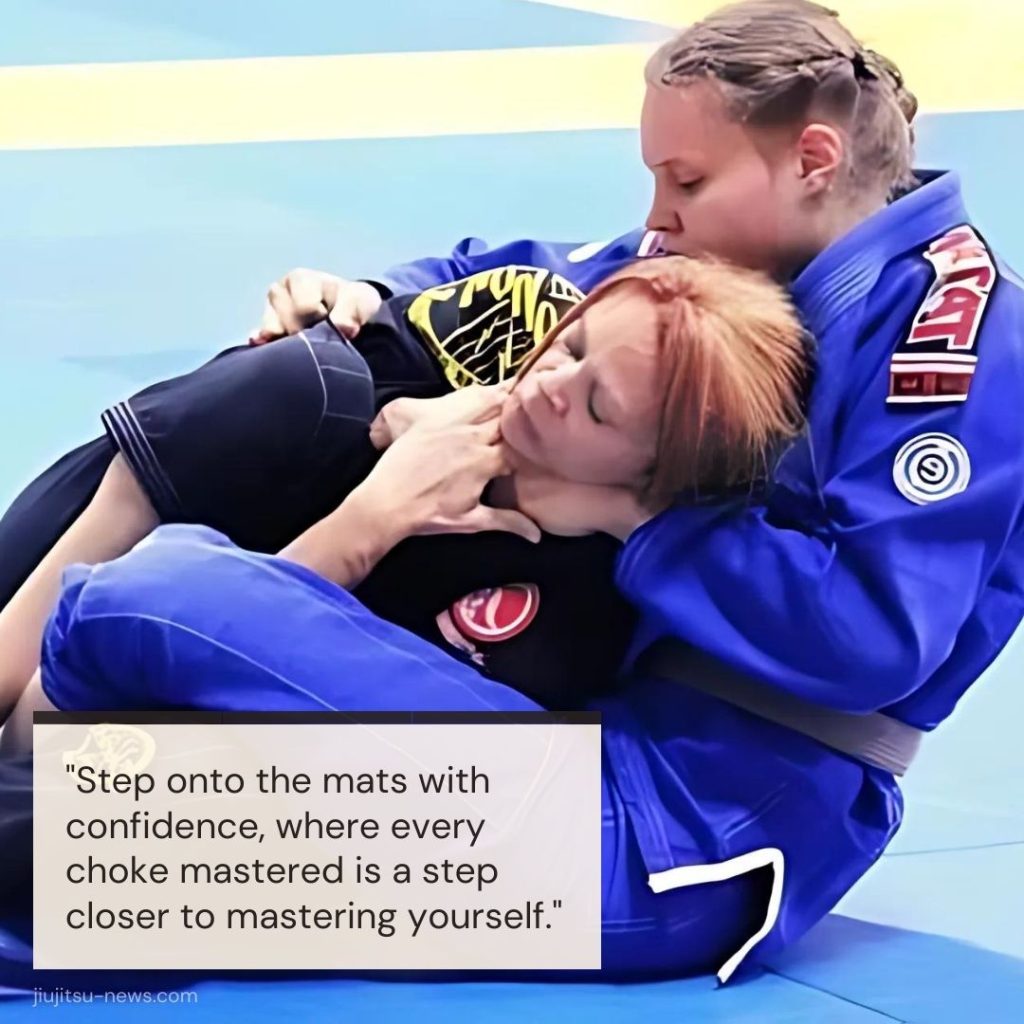
Chokes are a big deal in BJJ, right? They’re those powerhouse moves that can make your opponent tap out even when the heat’s cranking up in the most nail-biting matches.
Whether you’re rocking a gi or going no-gi, getting your choke game on point means you’re a step closer to dominating the mats.
Let’s dive into some of the top chokes in BJJ and MMA that leave little room for escape and a big chance for victory.
Essential BJJ Chokes

From the closed guard to the mount, or the sneakier side control, you’ve got a whole playground to set up choke submissions.
Triangle Choke
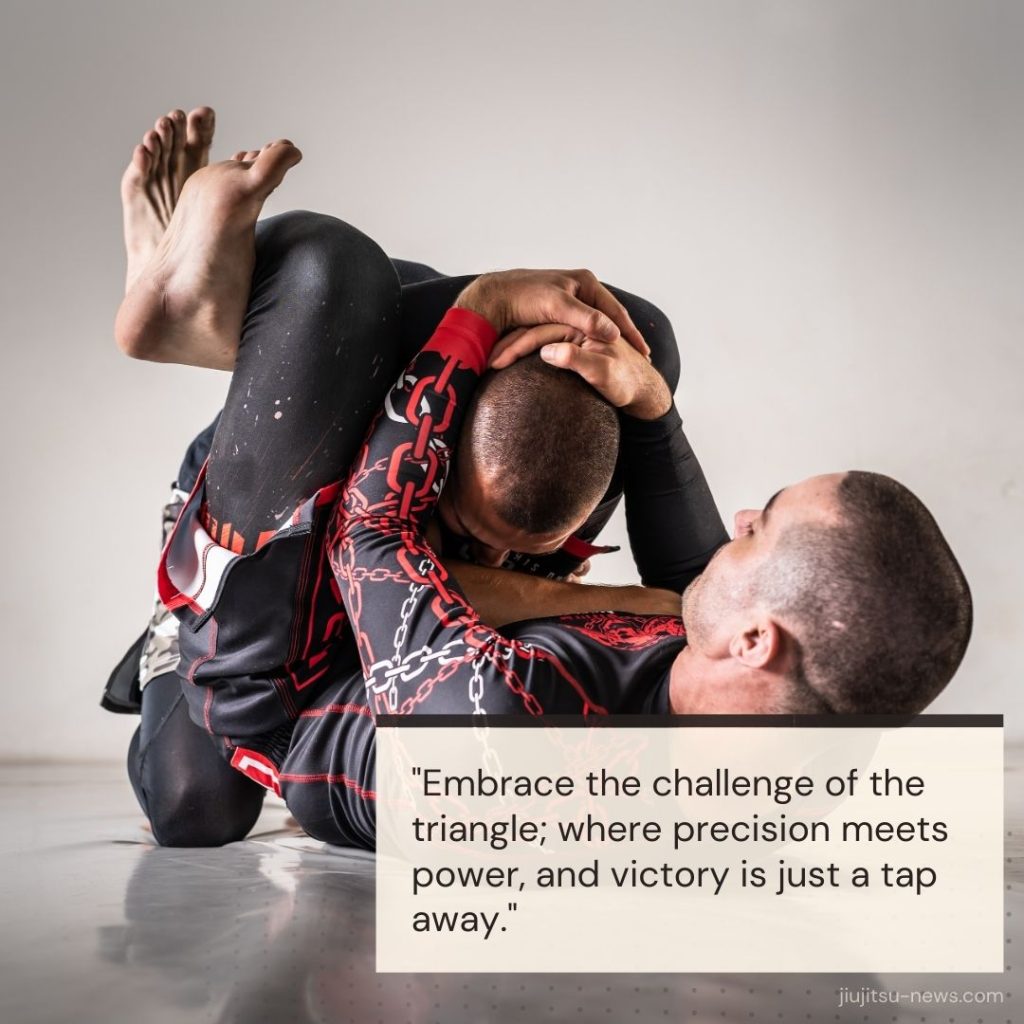
The triangle choke is a classic and can be your go-to from various positions like guard, mount, or back mount.
Originally from Judo, it’s not just effective—it’s brutal.
By wrapping your legs around your opponent’s neck and trapping an arm, you’re cutting off blood flow, leaving them with the option to tap out or blackout.
Cross Choke (X-Choke)
Favored by legends like Roger Gracie, this gi choke is executed by pressing on both carotid arteries with the collars.
You can slap this bad boy on from the mount or guard, but it’s a killer from the mount. Talk about effective!
Ezekiel Choke
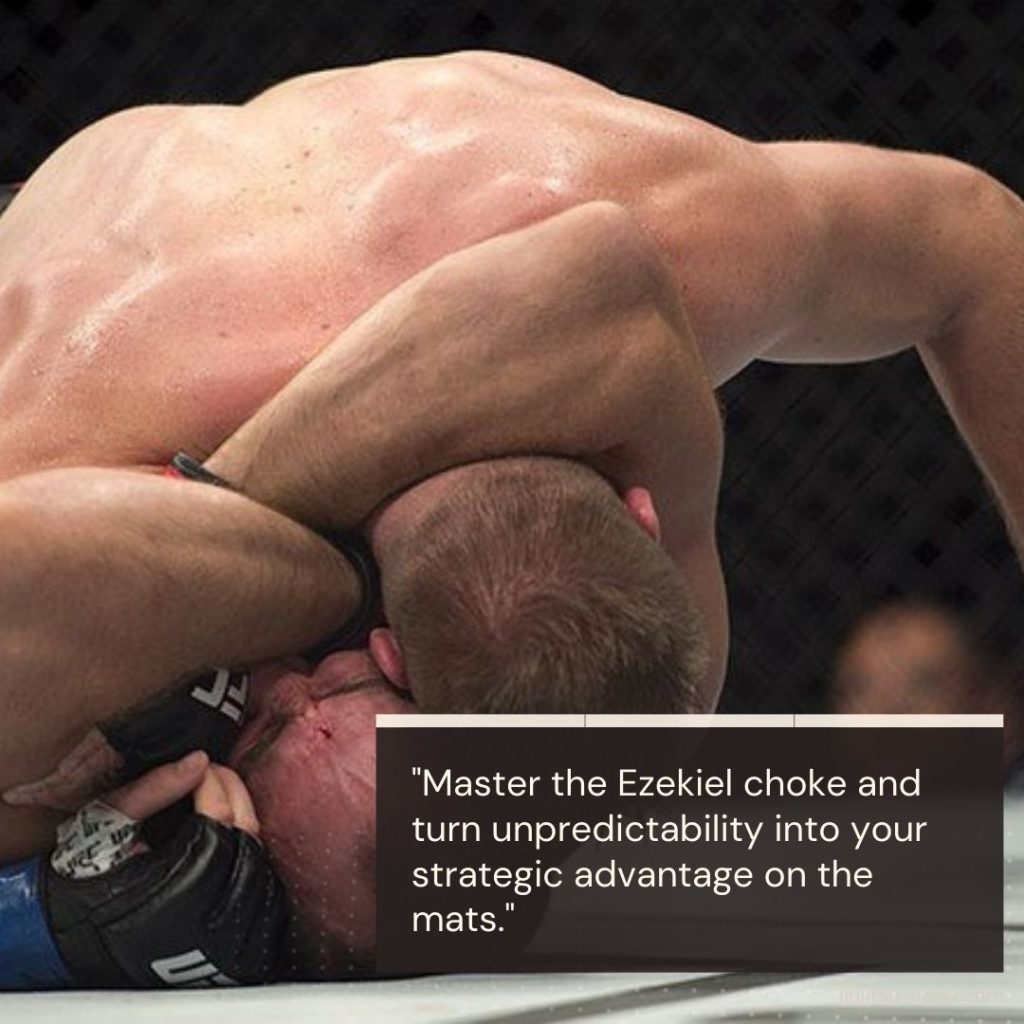
Whether in gi, no-gi, or even in a street scuffle, the Ezekiel is a sneaky choke that’s hard to see coming.
You can launch this air and sometimes blood choke from just about anywhere but landing it from full mount feels just right.
Arm Triangle Choke
Similar to the triangle but with your arms doing the work, this choke squeezes the daylights out of the carotid arteries.
It’s a top pick from side control but don’t be shy to try it from other spots like north-south or even standing up.
Guillotine Choke

Perfect for when you’re in front of your opponent!
This choke uses an arm or two to create a noose around the neck, effectively pressing on the blood vessels.
Stand up or ground, it’s a versatile and vicious choice.
Loop Choke
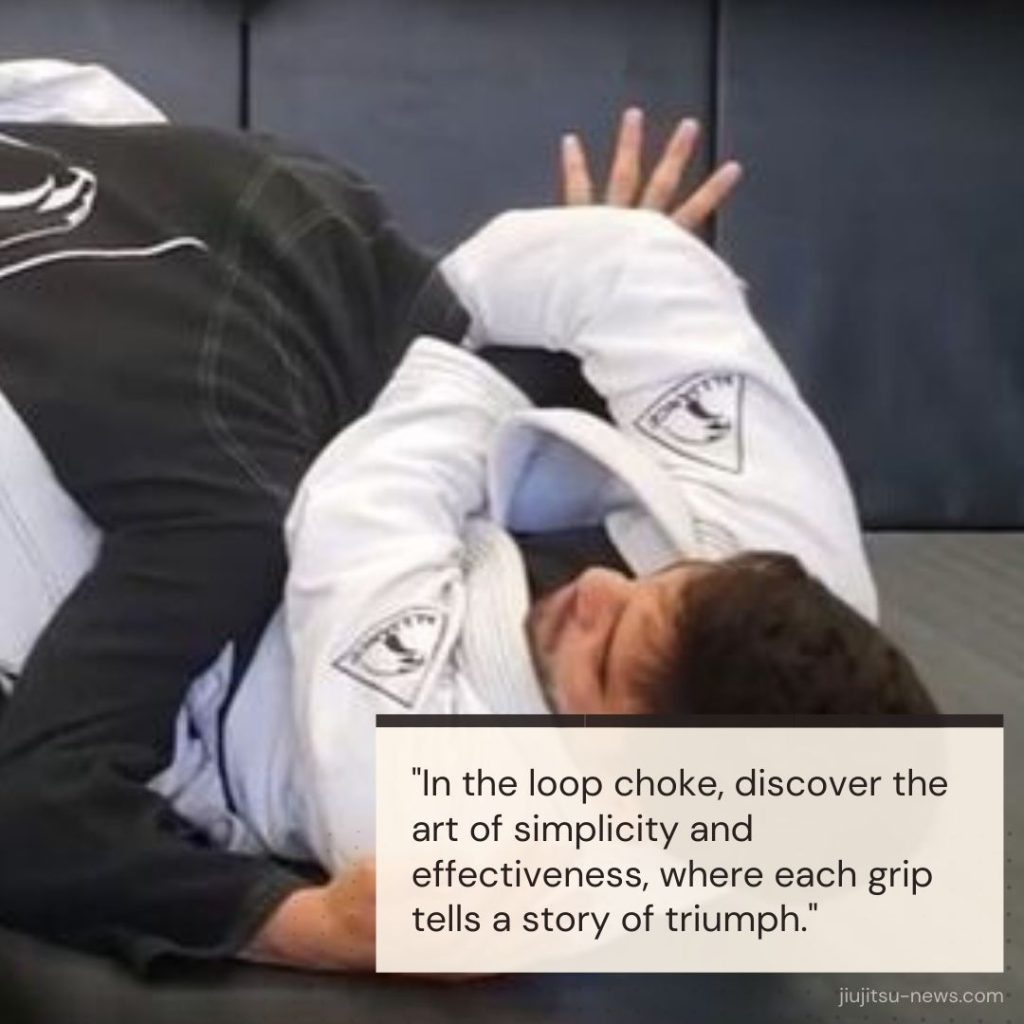
If you’re rocking a gi, get friendly with the loop choke early on.
Using the collar, you loop and tighten under the chin, which is as straightforward as it is effective, especially from the guard.
Bow And Arrow Choke
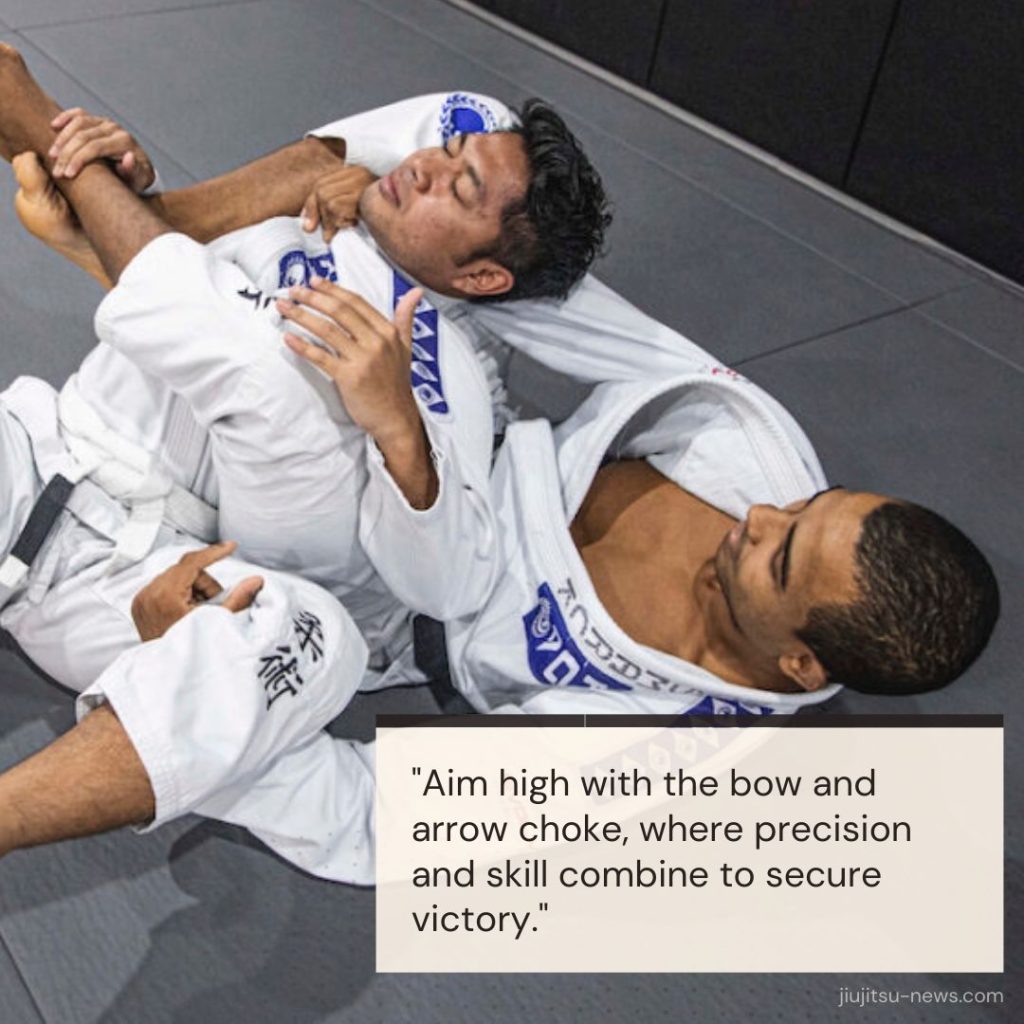
Need something high percentage for competitions? Enter the bow and arrow.
Using your opponent’s gi collar, this choke not only sounds cool.
But also delivers some serious pressure on the carotid arteries, typically from the back mount.
Baseball Bat Choke

Don’t let the name fool you; there’s nothing playful about this one.
It’s a fierce contender in both gi and no-gi, applied from various positions but best from knee on belly. Fast and furious!
Paper Cutter Choke
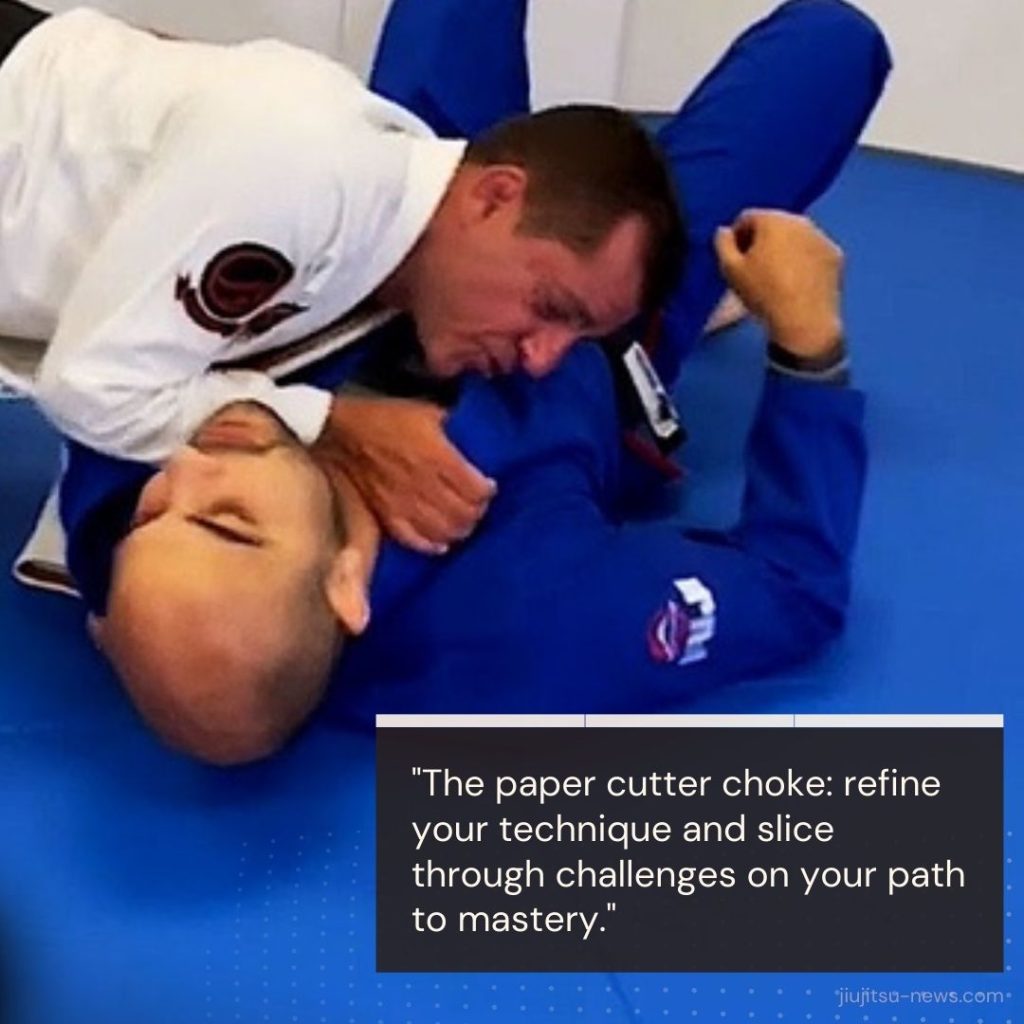
This one’s tricky but worth the hustle.
Using the opponent’s collar, you’ll need to be strategic about your weight distribution, making it a sophisticated addition to your choke arsenal.
North-South Choke
Underestimated yet highly effective, this choke applies direct pressure to the neck and can be a game-changer in your BJJ strategy.
Anaconda Choke
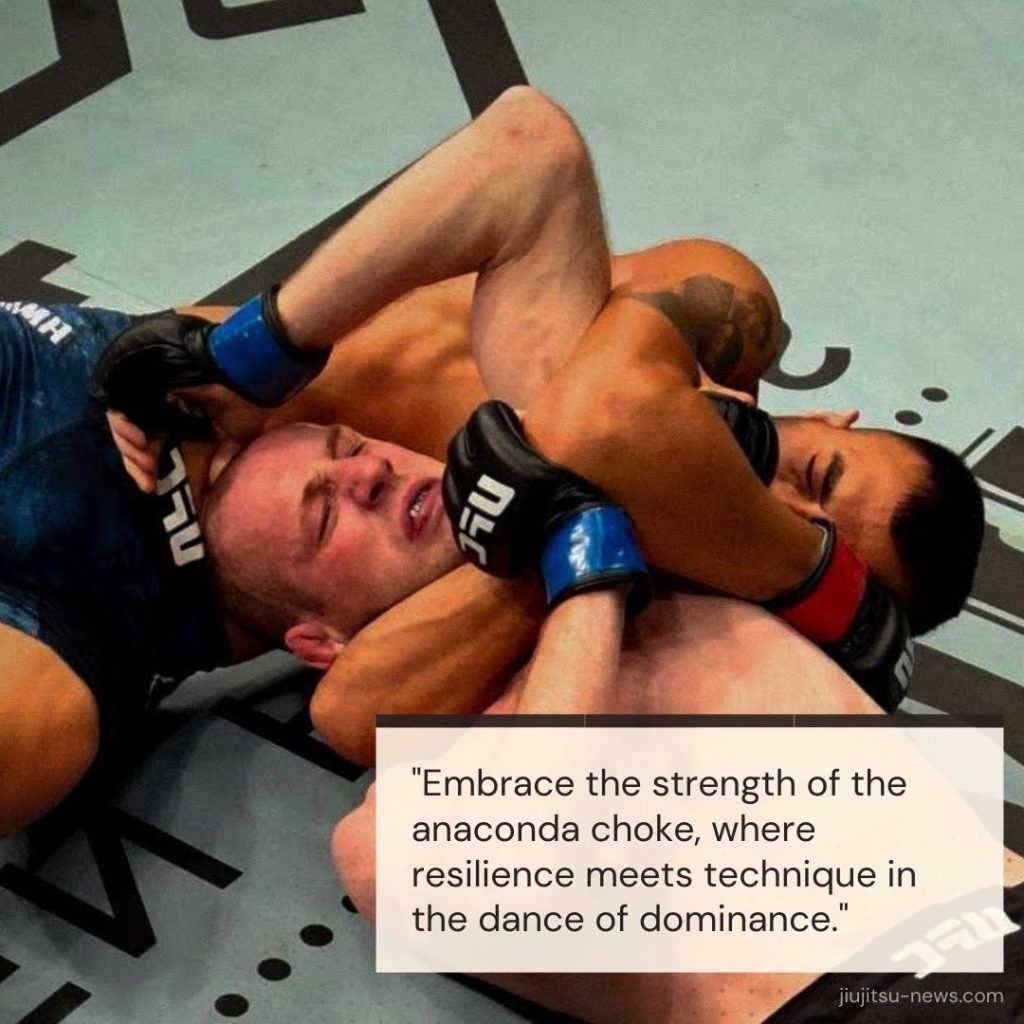
Ideal from the turtle position, this intense choke targets both the head and arm, making it a formidable move in your grappling toolkit.
D’Arce Choke
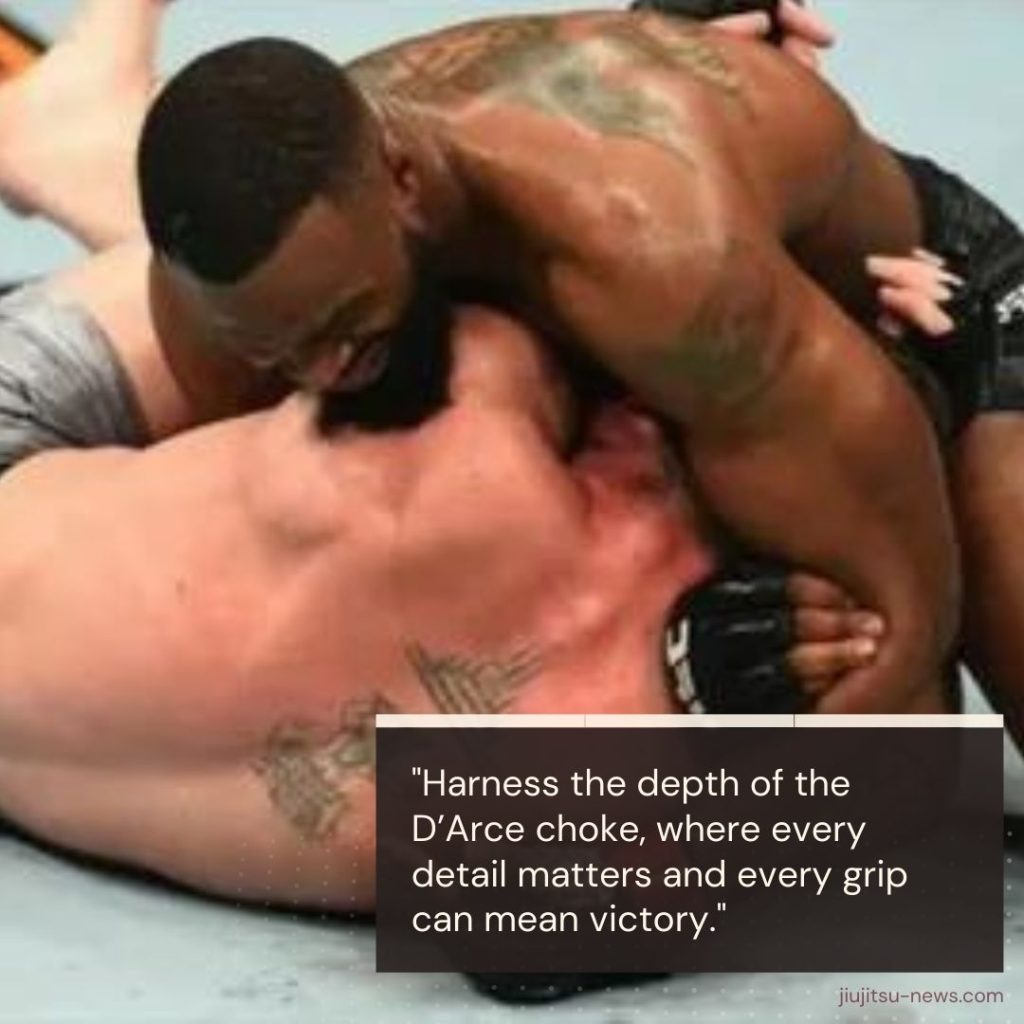
A powerful head-arm choke, the D’Arce is your go-to for applying deep, relentless pressure, especially effective from side control or half guard.
Rear-Naked Choke

A staple in BJJ, this choke is all about stealth and efficiency, making it a favorite across all skill levels.
Understanding Chokes: Blood vs. Air
Blood chokes cut off blood flow to the brain, needing precision to be safe yet effective.
Air chokes, on the other hand, compress the airways, demanding a solid grasp of the technique to be used responsibly.
Are you ready to explore the depths of MMA and Jiu-Jitsu? Get insider stories, fight breakdowns, and mindset gems delivered straight to your inbox. Subscribe Now!
Wrapping It Up
Mastering these chokes can drastically up your game, making you a formidable player on the mats.
Remember, the key is to learn them safely and practice diligently.
Whether you’re a newbie or a seasoned pro, getting a grip on these techniques can set you apart in the dynamic world of BJJ.
Stay safe, train smart, and keep choking (responsibly, of course)!



